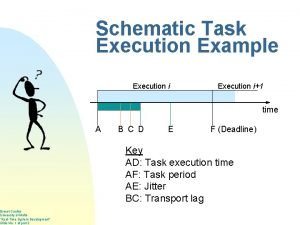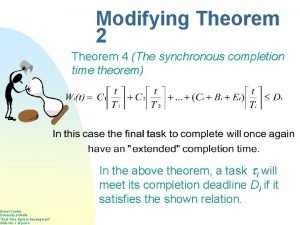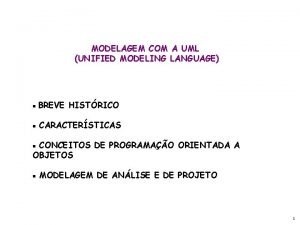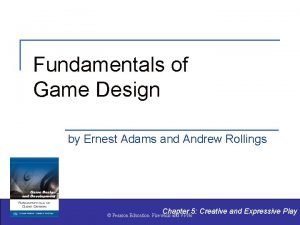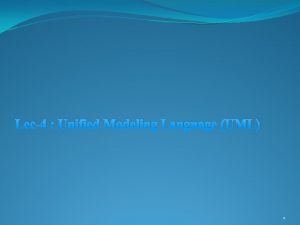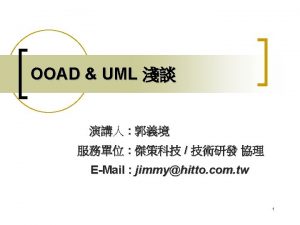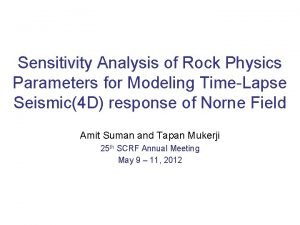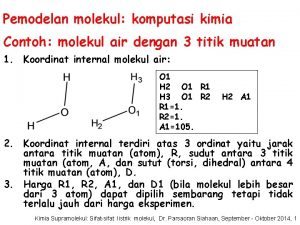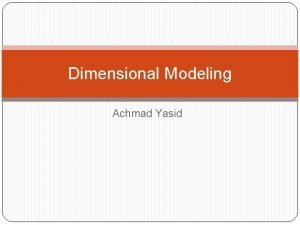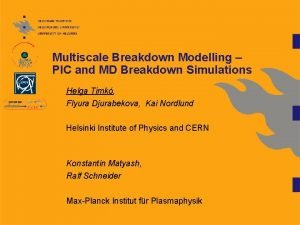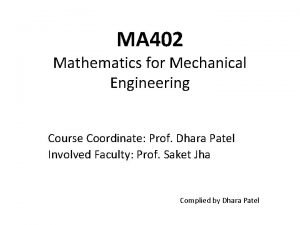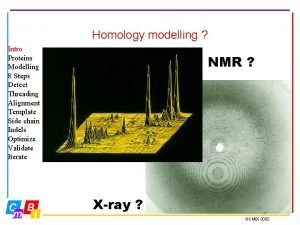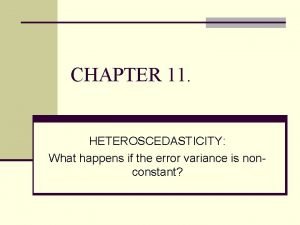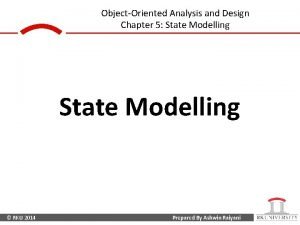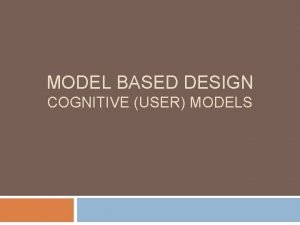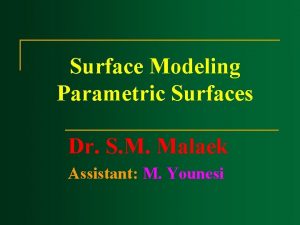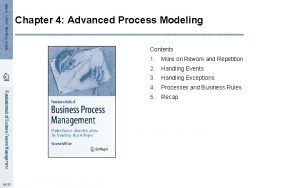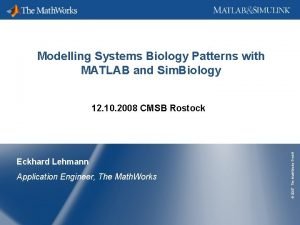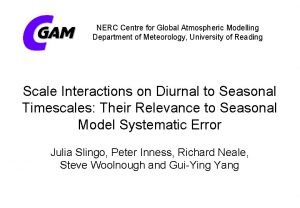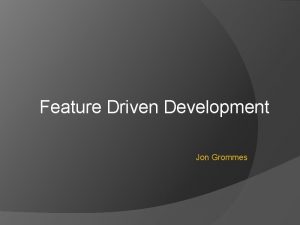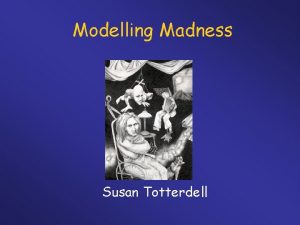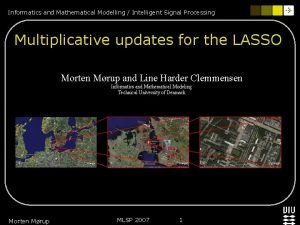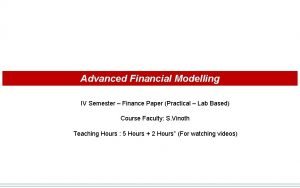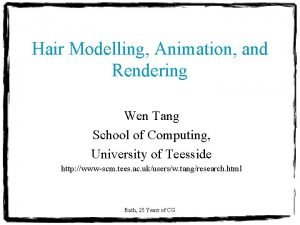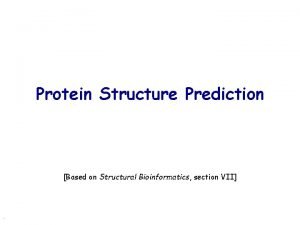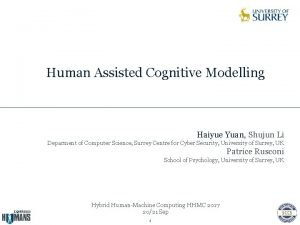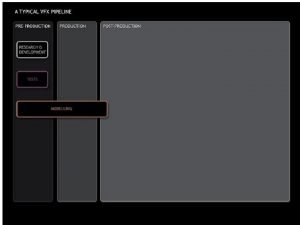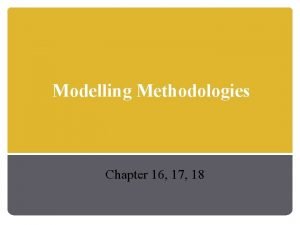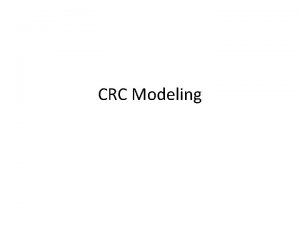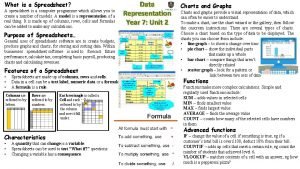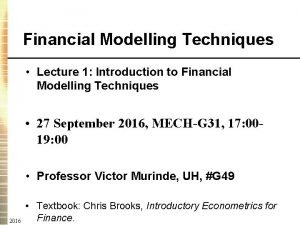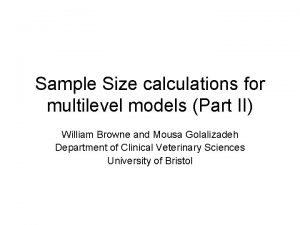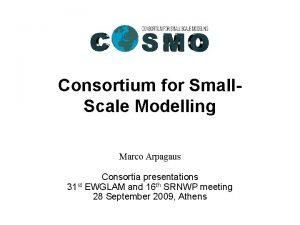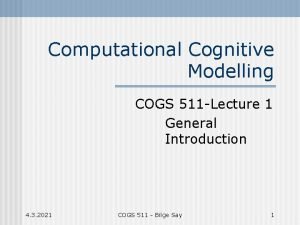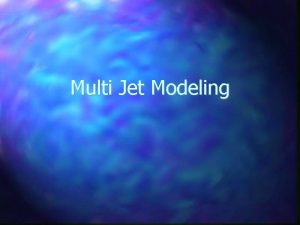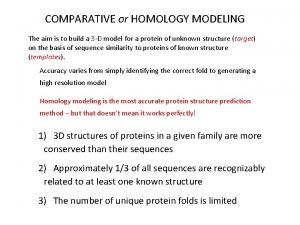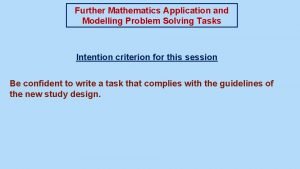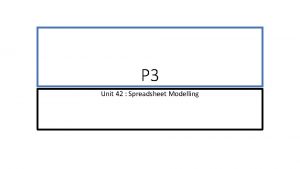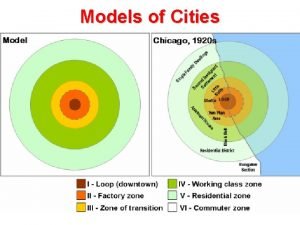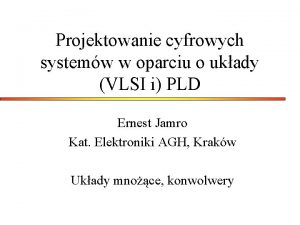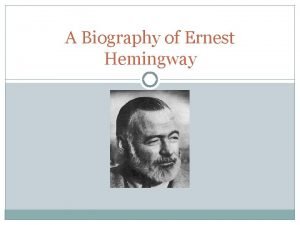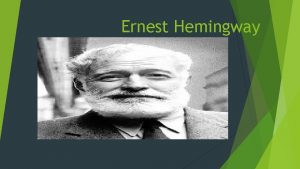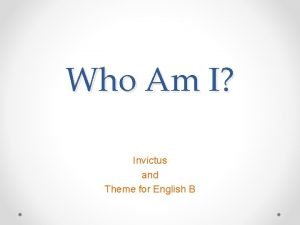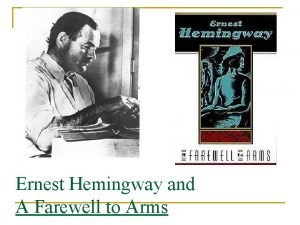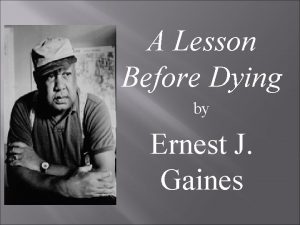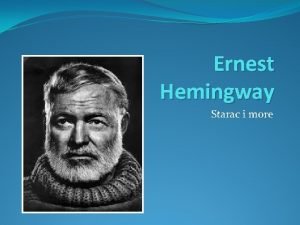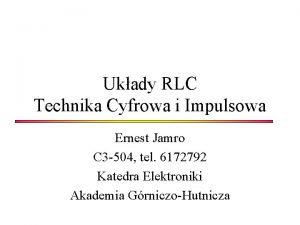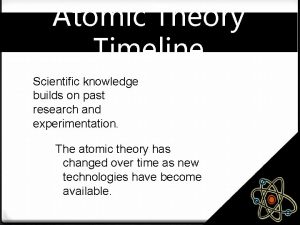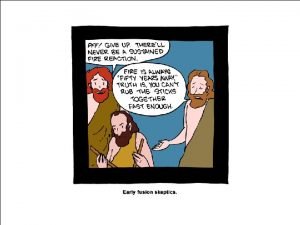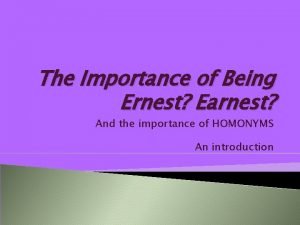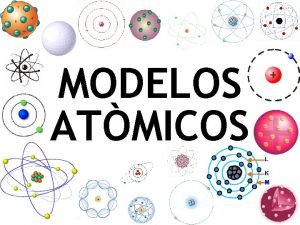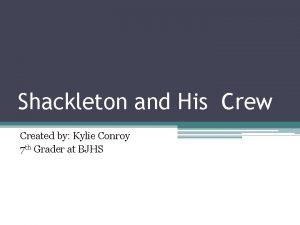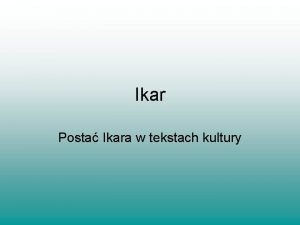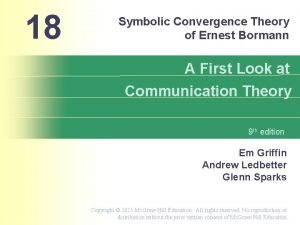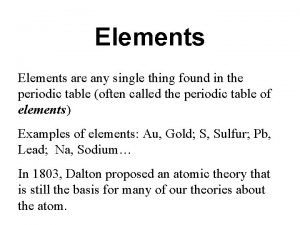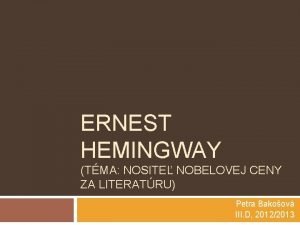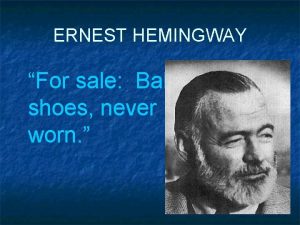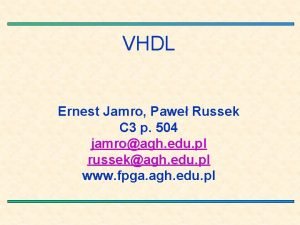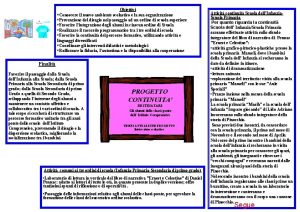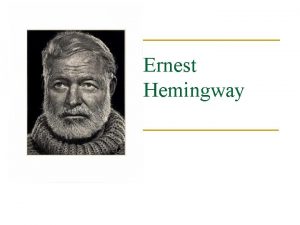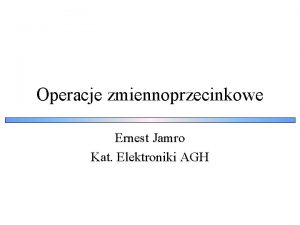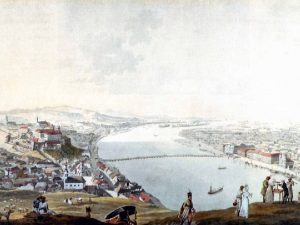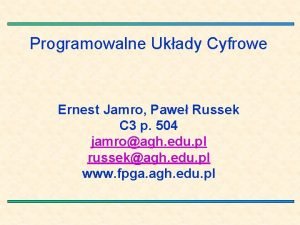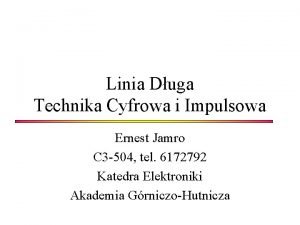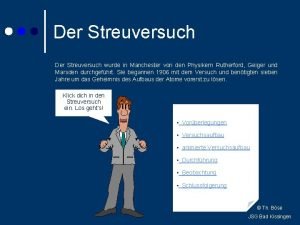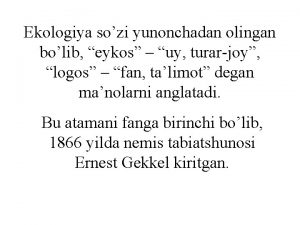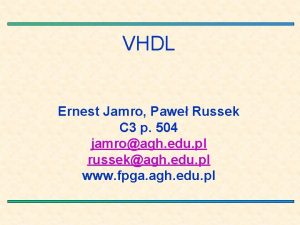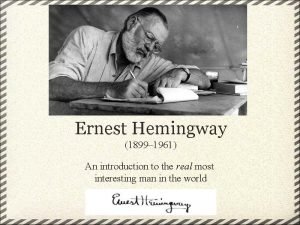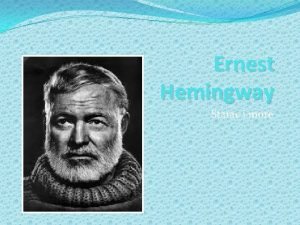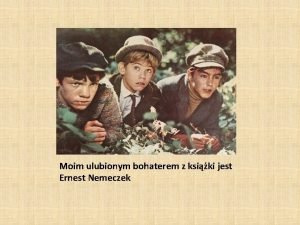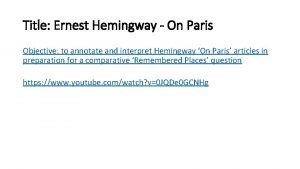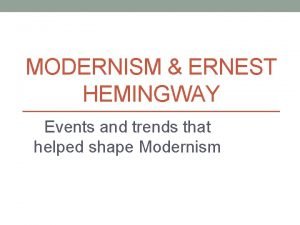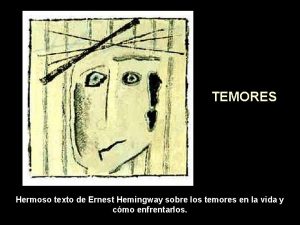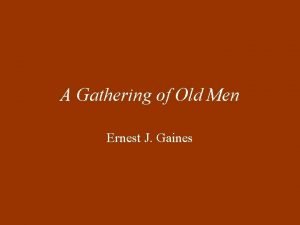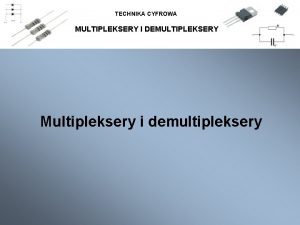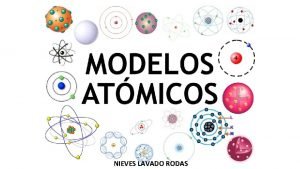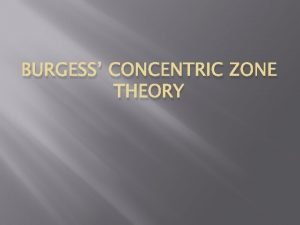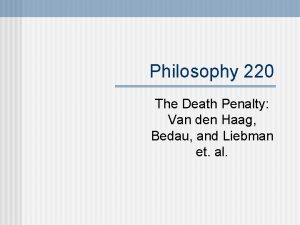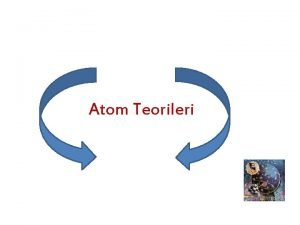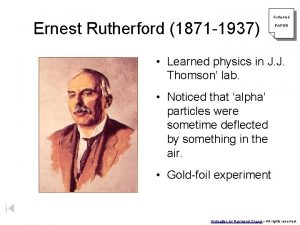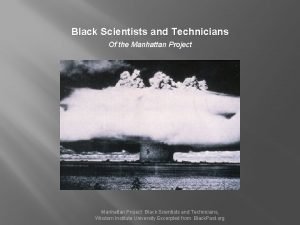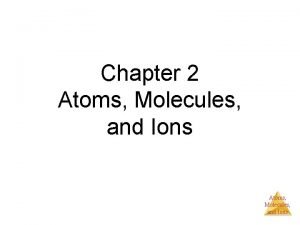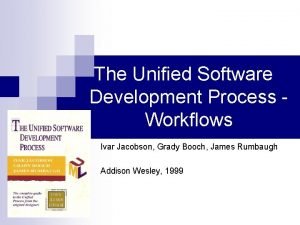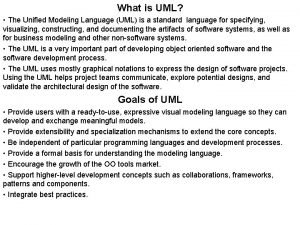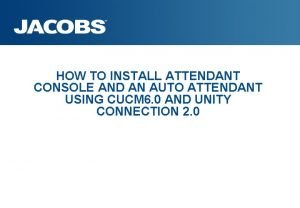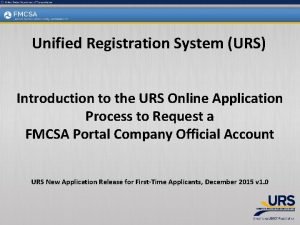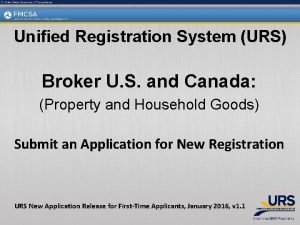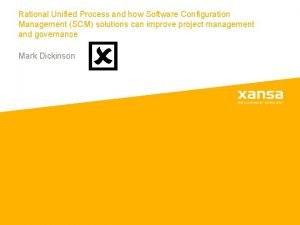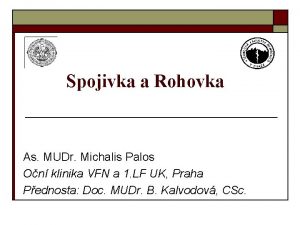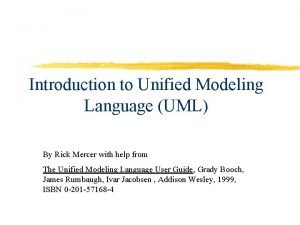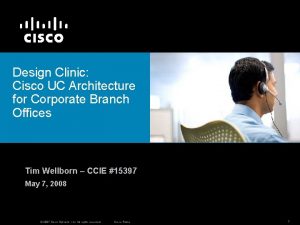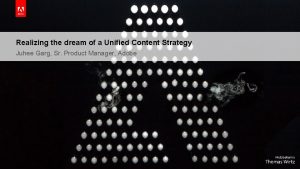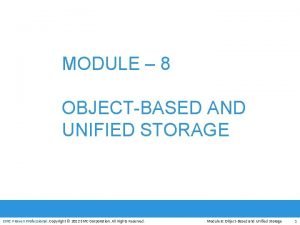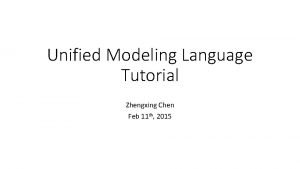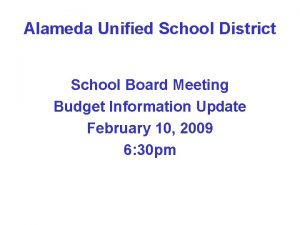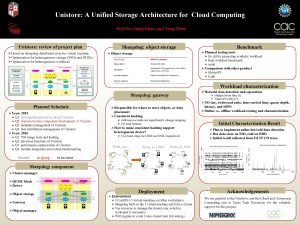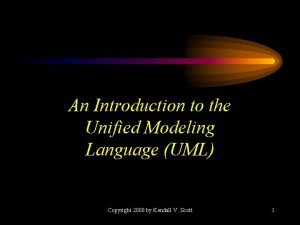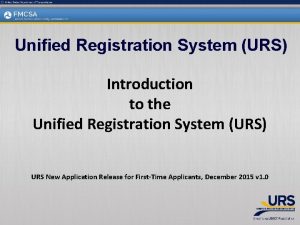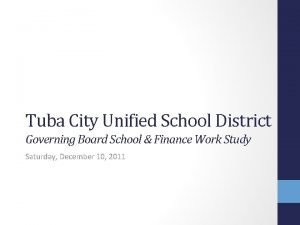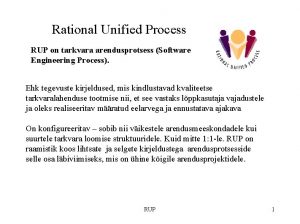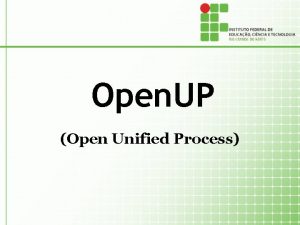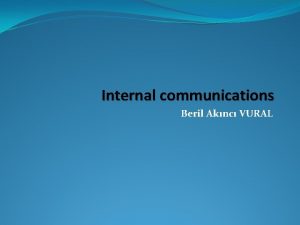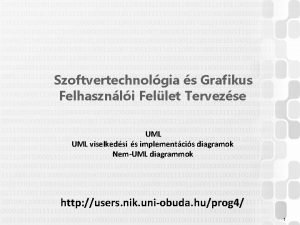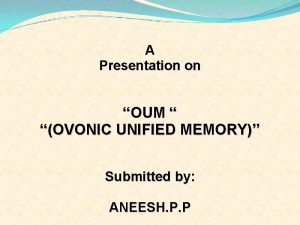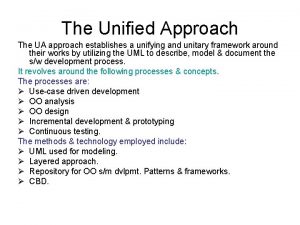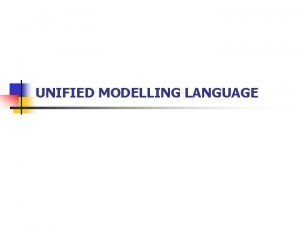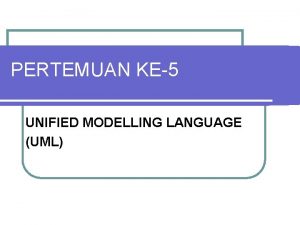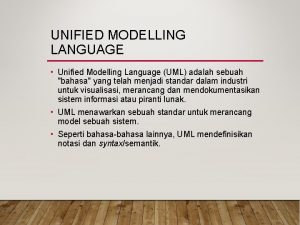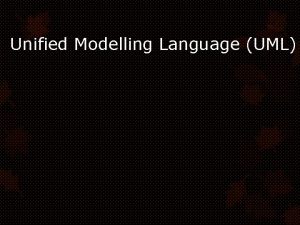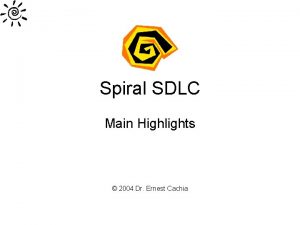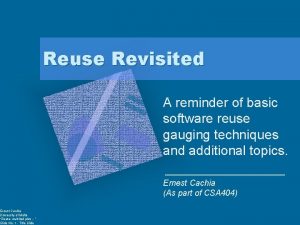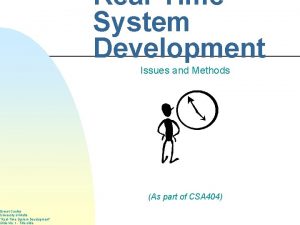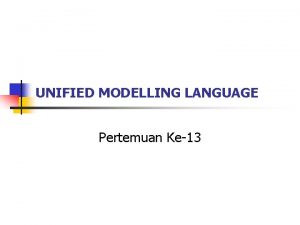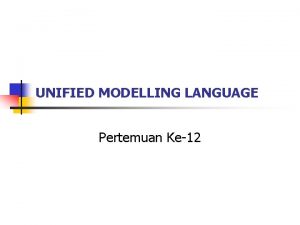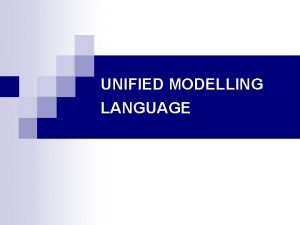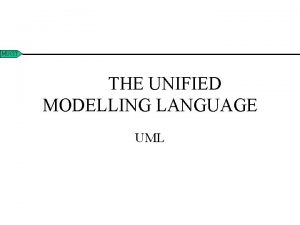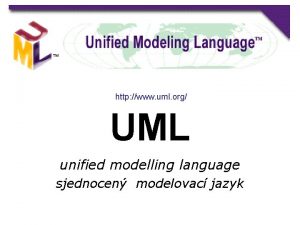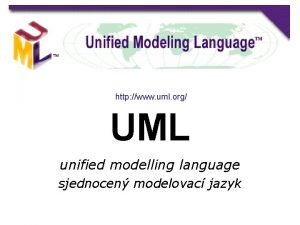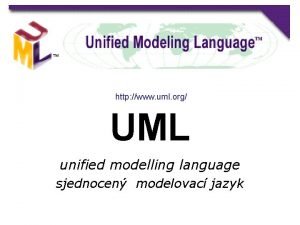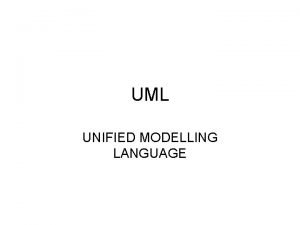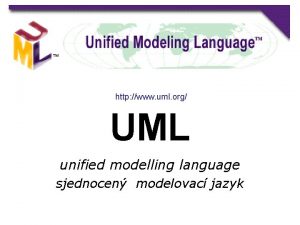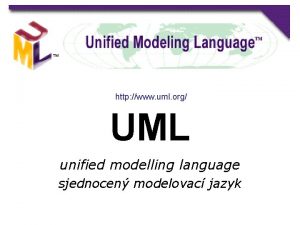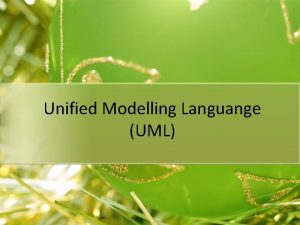UML FUNDAMENTALS Dr Ernest Cachia UML Unified Modelling





























































































































![UML State Transitions Full transition syntax is as follows: event-signature'['guard-condition']/'action-expression'^'send-clause eventname'('parameter', ', . . UML State Transitions Full transition syntax is as follows: event-signature'['guard-condition']/'action-expression'^'send-clause eventname'('parameter', ', . .](https://slidetodoc.com/presentation_image_h/fd87dbc723808b83eff40c752a656641/image-126.jpg)









![Send-Clause Examples Idle On first floor [timer = time-out] / go_down(first_floor) timer = 0 Send-Clause Examples Idle On first floor [timer = time-out] / go_down(first_floor) timer = 0](https://slidetodoc.com/presentation_image_h/fd87dbc723808b83eff40c752a656641/image-136.jpg)




















![Iteration Conditions in UML Sequence Diagrams Iteration condition controlled message syntax: [continuation. Condition]*operation(parameter) An Iteration Conditions in UML Sequence Diagrams Iteration condition controlled message syntax: [continuation. Condition]*operation(parameter) An](https://slidetodoc.com/presentation_image_h/fd87dbc723808b83eff40c752a656641/image-157.jpg)













![Basic Components of a UML Collaboration Diagram Service: Sequence-number: [condition]: message(parameter) A return value Basic Components of a UML Collaboration Diagram Service: Sequence-number: [condition]: message(parameter) A return value](https://slidetodoc.com/presentation_image_h/fd87dbc723808b83eff40c752a656641/image-171.jpg)

![Examples of Collaboration Diagram Messages 1: display() [mode=display]1. 2. 1: redraw() [balance > 0]5: Examples of Collaboration Diagram Messages 1: display() [mode=display]1. 2. 1: redraw() [balance > 0]5:](https://slidetodoc.com/presentation_image_h/fd87dbc723808b83eff40c752a656641/image-173.jpg)


![UML Collaboration Diagram Example : Computer Print(ps_file) 1: Print(ps_file) : print. Server [printer. Free]1. UML Collaboration Diagram Example : Computer Print(ps_file) 1: Print(ps_file) : print. Server [printer. Free]1.](https://slidetodoc.com/presentation_image_h/fd87dbc723808b83eff40c752a656641/image-176.jpg)
![UML Collaboration Diagram Example with Return-Value calc. Prime(n) : Calculator 1*[z: =1. . n]: UML Collaboration Diagram Example with Return-Value calc. Prime(n) : Calculator 1*[z: =1. . n]:](https://slidetodoc.com/presentation_image_h/fd87dbc723808b83eff40c752a656641/image-177.jpg)









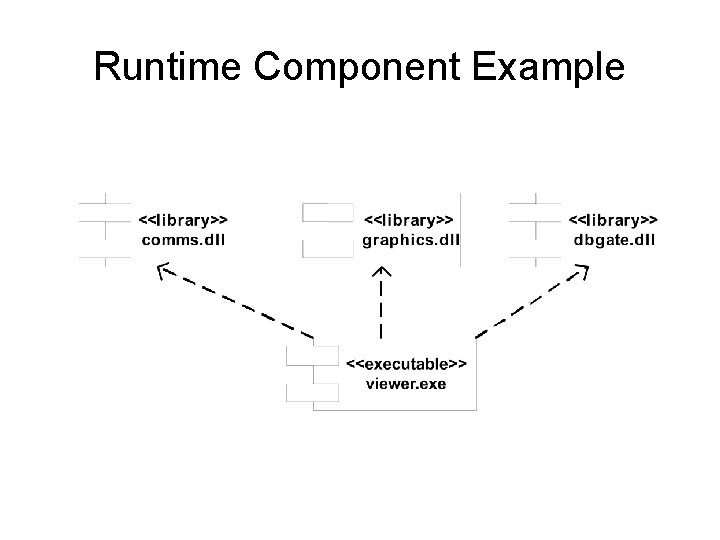
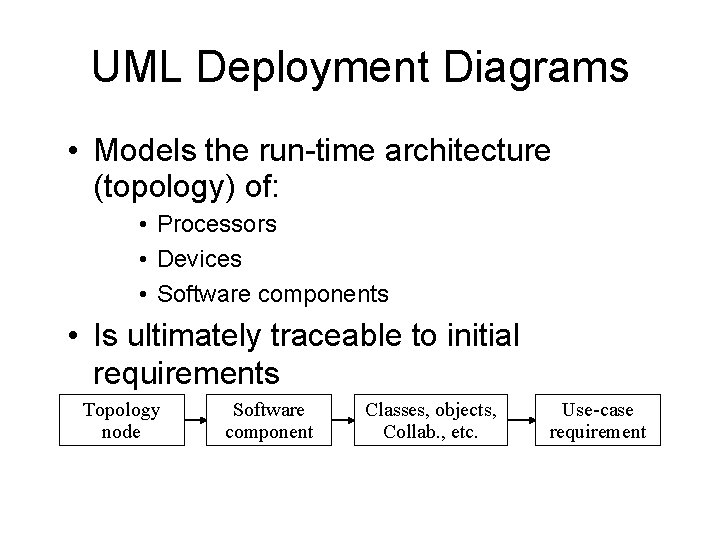



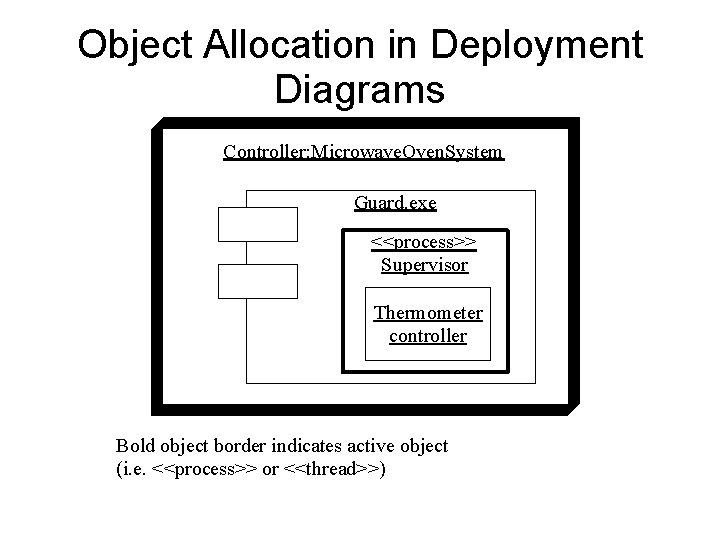
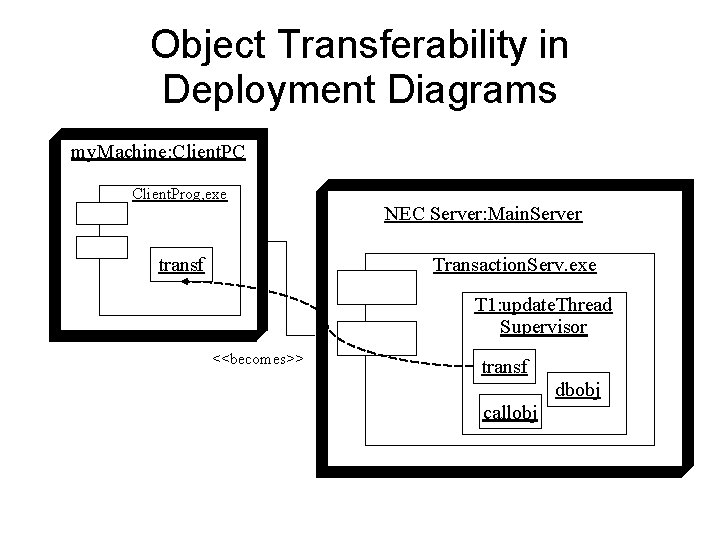
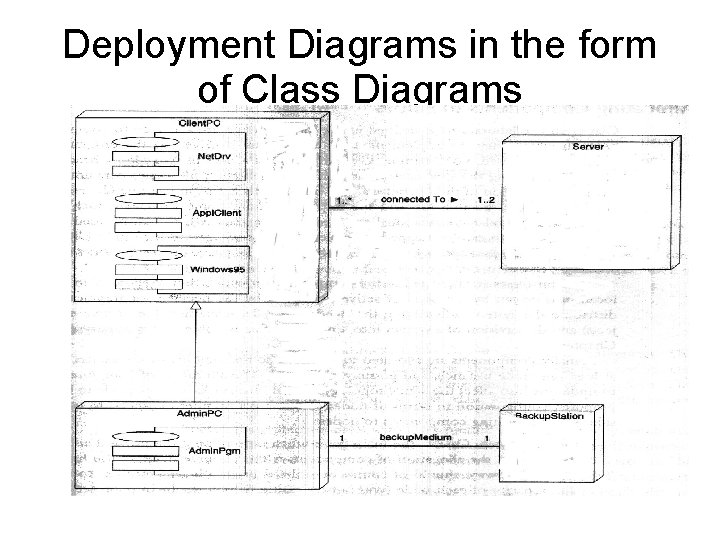

- Slides: 195

UML FUNDAMENTALS Dr. Ernest Cachia

UML Unified Modelling Language Visualising and documenting analysis and design effort. • Unified because it … – Combines main preceding OO methods (Booch by Grady Booch, OMT by Jim Rumbaugh and OOSE by Ivar Jacobson) • Modelling because it is … – Primarily used for visually modelling systems. Many system views are supported by appropriate models • Language because … – It offers a syntax through which to express modelled knowledge

Booch '91 OMT-1 Booch '93 OMT-2 UM 0. 8 OOSE 1995 UML 0. 9/0. 91 June to Oct 1996 UML 1. 0 UML 1. 1 Jan 1997 Sep 1997 Partner's expertise Standardisation Public feedback Jun-Oct'96 Other Fragmentary Unification UML Ancestry (visual) Industrialisation

Further (latest) UML Evolution

UML Partners The list is quite an impressive one: Hewlett-Packard ● IBM ● Microsoft ● Oracle ● i-Logix ● Intelli Corp. ● MCI Systemhouse ● Object. Time ● Unisys ● Sterling Software ● Rational Software ● ICON computing ● Platinum Technology ● and others… ●

and so…What is UML? Based on the previous three slides… • A language for capturing and expressing knowledge • A tool for system discovery and development • A tool for visual development modelling • A set of well-founded guidelines • A milestone generator • A popular (therefore supported) tool

and…What UML is not! • A visual programming language or environment • A database specification tool • A development process (i. e. an SDLC) • A panacea • A quality guarantee

What UML can do for you Help you to: – Better think out and document your system before implementing it – “forecast” your system – Determine islands of reusability – Lower development costs – Plan and analyse your logic (system behaviour) – Make the right decisions at an early stage (before committed to code) – Better deploy the system for efficient memory and processor usage – Easier maintenance/modification on well documented systems – Lower maintenance costs – Establish a communication standard – Minimise “lead-in” costs

UML components UML Views Functional Non-functional Organisational Diagrams 9 diagrams (see further on) Model Elements Symbology / notation General Mechanisms Adornments Notes Specifications

The Case “for” Diagrams • • Aesthetic Descriptive Compressive Simple Understandable Universal Formalise-able / Standardise-able

The Case “against” Diagrams • • • Not inherent knowledge Easily cluttered Require some training Not necessarily revealing Must be liked to be accepted and used Effort to draw

UML diagrams Use-Case Static Structure Object Class Interaction Sequence Collaboration State Activity Implementation Component Deployment

UML Diagrams (comparative slide) Use-Case (relation of actors to system functions) Class (static class structure) Object (same as class - only using class instances – i. e. objects) State (states of objects in a particular class) Sequence (Object message passing structure) Collaboration (same as sequence but also shows context - i. e. objects and their relationships) Activity (sequential flow of activities i. e. action states) Component (code structure) Deployment (mapping of software to hardware)

UML Diagram Philosophy Any UML diagram: • Depicts concepts – as symbols • Depicts relationships between concepts – as directed or undirected arcs (lines) • Depicts names – as labels within or next to symbols and lines

The Main 4 UML Diagrams • • Use-Case Class Sequence State Examples are depicted on the following slides.

The Use-Case Diagram

The Class Diagram

The Sequence Diagram

The State Diagram

The Other 5 UML Diagrams • • • Object Collaboration Activity Component Deployment Examples are depicted on the following slides.

The Object Diagram

The Collaboration Diagram

The Activity Diagram

The Component Diagram

The Deployment Diagram

UML Relationships

Some Points to Ponder 1. How would you justify the use of UML in any IS project to programming personnel? 2. What is the difference between static and dynamic UML diagrams? 3. Why does UML attempt to model systems with a heavy emphasis on graphic notation? 4. Why does UML not restrict itself to one type of diagram? 5. Is UML restrictive to system development? Justify your reply. 6. A common misconception is that systems built using UML are quality guaranteed. Discuss this issue and present (write down) your reasoning.

Workshop Activity -7 Try textually describing the software controlling production of a large-scale prepacked food company (weather/calendar/market controlled). Once done, try describing the exact same system diagrammatically. Draw some conclusions from your work.

UML Development Model UML DM Requirements Gathering Analysis Design Development Deployment The next slides will outline the above phases

Requirements Gathering (1/2) Determine what the client wants • Business process elicitation – Tool: Interview; Questionnaire; Observation; Experience – Product: UML Activity diagram • Domain analysis – Tool: Interview; Noun-Verb extraction; Observation – Product: UML HL Class diagram; textual supporting data

Requirements Gathering (2/2) • System context determination – Tool: Observation; Process walk-through – Product: UML Deployment diagram • System requirements elicitation – Tool: JAD moderated session – Product: Refined HL Class Diagram; UML Package diagram • Phase outcome presentation – Tool: n/a – Product: n/a

Analysis (1/2) Unfold a detailed understanding of the problem • Determine system usage (Actor determination) – Tool: JAD session; User interrogation – Product: Use-Case diagram/s • Expand Use-Cases (Fleshing-out) – Tool: Further user interrogation – Product: Textual supplement to Use-Case diagrams • Refine Class diagram – Tool: JAD session; Observation (of JAD) – Product: Refined Class diagram (inc. associations, cardinalities/modalities, generalisations, etc. )

Analysis (2/2) • State analysis – Tool: Thought – Product: State diagram • Interaction analysis – Tool: Internal experience (Use-Case + refined Class + State) – Product: Sequence and Collaboration diagrams • System integration analysis – Tool: Observation; walk-through, interrogation – Product: Detailed deployment diagram

Design (1/2) Analysis ↔ Design (until design is completed) • Develop and refine object diagrams – Tool: Operation analysis – Product: Activity diagrams • Develop component diagrams – Tool: Programmers; system component (and interaction) visualisation – Product: Component diagrams • Start thinking about deployment – Tool: Analysis of component structure and their integration (from previous); external system co-operation – Product: Part of deployment diagram from analysis

Design (2/2) • Prototype development (GUI) – Tool: JAD session previous and new; previous use-case diagrams – Product: Screen prototypes and shots • Testing of design – Peer-developed test cases based on existing use-case diagrams – Product: Test cases (scripts) • Design documentation structure – Tool: Designer input and document configuration tools – Product: Document structure

Development (1/2) Programmers’ realm – should proceed swiftly if right effort was initially invested • Coding – Tool: Programmers using class, object, activity and component diagrams – Product: Code • Testing – Tool: Back-and-forth from the coding activity using the test cases designed in the design phase – Product: Test results

Development (2/2) • Implement, connect and test UIs – Tool: UI development environment; programmer interaction – Product: Full working system • Finalise documentation – Tool: programmer input; inspection – Product: Full system documentation

Deployment Software to hardware mapping and consideration of interacting systems • Backup and recovery strategy – Tool: Initial requirements; system nature considerations – Product: Crash recovery plan • Installation – Tool: n/a – Product: Deployed system • Installation testing – Tool: Implementation of test sequences including backup and recovery – Product: Final (actual) test results

Workshop Activity -8 Internally within each team, divide up into “client/analyst”, “object engineer”, and “programmer/documentation specialist” and try developing a basic DVD rental control software system using basic UML notation so far covered and according to UML DM. Request trainer inspection after every phase. Coding need only be carried out at a highly abstract structured text or pseudocode level.

Use-Case Diagrams (UCDs) (1/2) • A use-case is… – a simplification of (a part of) a business process model – a set of activities within a system – presented from the point of view of the associated actors (i. e. those actors interacting with the system) – leading to an externally visible result • What is the model supposed to do? – offer a simplified and limited notation – allow other diagrams used to support (realise) it – combinatorial with prototypes as complementary information – not intended to model functional decomposition

Use-Case Diagrams (UCDs) (2/2) Components: use-cases and actors – a use-case must always deliver a value to an actor – the aggregate of all use-cases is the system's complete functionality Goals: – – consolidate system functional requirements provide a development synchronisation point provide a basis for system testing provide a basic function-class/operation map

UCD Components • The use case itself is drawn as an oval. • The actors are drawn as little stick figures. • The actors are connected to the use case with lines. System Use-case symbol Actor 1 «extend» System boundary «include» Relationships and connectors

UML Actors • An actor – Is a class that forms a system boundary – participates in a use-case – is not within our responsibility as systems analyst/s and/or designer/s • Examples are – end-users (roles) – external systems (co-operations) – time related events (events) – external, passive objects (entities)

UML Actor Classification A primary actor uses the system's primary functions (e. g. a bank cashier); A secondary actor uses the system's secondary functions (e. g. a bank manager, system administrator); An active actor initiates a use-case; A passive actor only participates in one or more use-cases.

Identifying UML Actors Ask yourself the following questions: Who are the system’s primary users? Who requires system support for daily tasks? Who are the system’s secondary users? What hardware does the system handle? Which other (if any) systems interact with the system in question? Do any entities interacting with the system perform multiple roles as actors? Which other entities (human or otherwise) might have an interest in the system's output?

UML Actor Notation and Generalisation Examples Staff Clerical staff Academic staff The guy Support staff «actor» The guy

UML Use-Cases (UCs not UC Diagrams UCDs) Definition: "A set of sequences of actions a system performs that yield an observable result of value to a particular actor. “ Use-case characteristics: Always initiated by an actor (voluntarily or involuntarily); Must provide discernible value to an actor; Must form a complete conceptual function. (conceptual completion is when the end observable value is produced)

UC Description Criteria Use-Case Number (ID) and Name Use-case – – – actors pre- and post-conditions invariants non-functional requirements Behaviour modelled as: - Described by - activity diagram/s decomposition in smaller UC diagrams – error-handling and exceptions – Rules modelled as: - – – activity diagram/s services examples, prototypes, etc. open questions and contacts other diagrams

UC Description Example UC: Login authentication - Example on the next slide Example on the slide after the next Example two slides further on E. g. Collaboration diagram (tackled later on) User Disable access - Enable access Logged in user = valid user Login delay; line security Behaviour modelled as: - Invalid login name; interrupt entry Rules modelled as: - activity diagram/s decomposition in smaller UC diagrams activity diagram/s Log, pass prompts; authenticate examples, prototypes, etc. open questions and contacts other diagrams (realisations)

Activity Diagram from previous

Sub-UCs to Login Example

Rules Activity Diagram Example

Consolidating UC Descriptions Ask yourself these questions: Do all actors interacting with a given UC have communication association to it? Are there common roles amongst actors? Are there UC similarities? Are there special cases of a UC? Are all system functions catered for by UCs?

UCD Relationships (1/2) Association relationship Extend relationship «extend» Include relationship «include» Generalisation relationship

UCD Relationships (2/2) • Associations • Links actors to their UCs • Use (or include) • Drawn from base UC to used UC, it shows inclusion of functionality of one UC in another (used in base) • Extend • Drawn from extension to base UC, it extends the meaning of UC to include optional behaviour • Generalisation • Drawn from specialised UC to base UC, it shows the link of a specialised UC to a more generalised one

UCD Definition Summary Use-Case diagrams: • show use-cases and actors • connected by “associations” • refined by inheritance stereotypes – “uses” • re-use of a set of activities (use-cases) • partitioning of activities • points to the re-used use-case – “extends” • variation of a use-case • points to the standard use-case

UCD Relationship Example (1/2)

UCD Relationship Example (2/2) «extend» make an interview elicit customer needs «include» produce a SRS

What a UCD is - and what it isn’t Attention focuser on the part of the business process that is going to be supported by the IS. It is the end-user perspective model. It is goal driven Helps to identify system services. Are not used as DFDs. Sequences, branching, loops, rules, etc. cannot (and should not) be directly expressed. Are often combined with activity diagrams, which serve as their refinement.

UCD Case Study (1/3) Vending Machine • After client interview the following system scenarios were identified: • A customer buys a product • The supplier restocks the machine • The supplier collects money from the machine • On the basis of these scenarios, the following three actors can be identified: • Customer; Supplier; Collector

UCD Case Study (2/3)

UCD Case Study (3/3) Introducing annotations (notes) and constraints.

Testing UCs Verification – Confirmation of correct development according to system requirements. Validation (only when working parts become available) – Confirmation of correct system functionality according to end-user needs. Walking the UC – This is basically, interchangeable role play by the system developers.

Workshop Activity -9 Create a simple UCD (i. e. no “uses” or “extends” relationships) for a course registration system described as follows: “The course registration system should allow students to register for and drop courses. The system’s administrator should be able to add and delete courses from the system as well as to cancel planned courses. If a planned course is cancelled the relevant instructor should be notified through the system. ” (Loosely adapted from Lee, 2002)

Workshop Activity -10 Create a UCD showing UC relationships (i. e. with “uses” or “extends” relationships and any actor generalisations) for an automated medical appointment system described as follows: “The appointment system should allow new or existing patients to make medical appointments according to doctorcontrolled availability schedules. Medical Centre management should be able to view current schedule information. ” (Loosely adapted from Dennis, 2002)

The UML Class Diagram • Is a static diagram (describes system structure) – Combines a number of model elements: • • Classes Attributes Operations (methods) Associations Aggregations Compositions Generalisations

A UML Class Name Attributes Operations Properties of class diagrams: - Static model; - Models structure and behaviour; - Used as a basis for other diagrams; - Easily converted to an object diagram.

Determining Classes (1/2) ● Is there data that requires storage, transformation or analysis? ● Are there external systems interacting with the one in question? ● Are any class libraries or components being use (from manufacturers, other colleagues or past projects)? ● Does the system handle any devices? ● Does the system model organisational structures? ● Analyse all actor roles.

Determining Classes (2/2) • Textual Analysis (based on Dennis, 2002) • A common or improper noun implies a class • A proper noun or direct reference implies an object (instance of a class) • A collective noun implies a class made up of groups of objects from another class • An adjective implies an attribute • A “doing” verb implies an operation • A “being” verb implies a classification relationship between an object and its class • A “having” verb implies an aggregation or association relationship • A transitive verb implies an operation • An intransitive verb implies an exception • A predicate or descriptive verb phrase implies an operation • An adverb implies an attribute of a relationship or an operation

UML Class Attributes (1/2) Very system dependent Describe characteristics of objects belonging to that class Can be informative - or confusing Has a definite type – – Primitive (Boolean, integer, real, enumerated, etc. ) language specific other classes any user defined type Has different visibility, including: – public (viewed and used from other classes) – private (cannot be accessed from other classes)

UML Class Attributes (2/2) • • Can be given a default value Can be given class-scope Can list possible values of enumeration Directly implementable into most modern programming languages with object-oriented support (e. g. Java) Attribute syntax: Visibility name: type=init_value{property_string}

UML Class Attribute Examples UNIXaccount + username : string + groupname : string + filesystem_size : integer + creation_date : date - password : string Invoice UNIXaccount + username : string + groupname : string = “staff" + filesystem_size : integer + creation_date : date - password : string Invoice + amount : real + date : date = current date + customer : string + specification : string - administrator : string = "unspecified" - number_of_invoices : integer + status : status = unpaid { unpaid, paid }

UML Class-to-Java Example Public class UNIXaccount { public string username; public string groupname = "csai"; public int filesystem_size; public date creation_date; private string password; static private integer no_of_accounts = 0 public UNIXaccount() { //Other initialisation no_of_accounts++; } //Methods go here }; UNIXaccount + username : string + groupname : string = “staff" + filesystem_size : integer + creation_date : date - password : string - no_of_accounts : integer = 0

Operations (Methods) Public class Figure { - x : integer = 0 private int x = 0; - y : integer = 0 private int y = 0; + draw() public void draw() { //Java code for drawing figure } }; Figure fig 1 = new Figure(); Figure fig 2 = new Figure(); fig 1. draw(); fig 2. draw();

Constraints on Operations

Association Examples Person * Driver Person Heater Domestic appliance Radio * Company car Driver 1 Adult Drives * 1 Employee Married to Husband Car Drives Company car Driver Wife Person ·Turns on Mum · Cleans Family member Toaster · Tunes Dad * Child Car

Qualified and "Or" Associations Person User PID Item of clothing 1 Plates * * IP-addr Process 0. . * 1 Car Male person {or} 0. . * Female person * Host

Ordered and Ternary Associations Library 1. . * * {ordered by date} Books 1. . * * {ordered by surname} Member No qualified or aggregation associations allowed in ternary. 0. . * Credit card Bank card 1. . * Client 1. . * Shop Person Establishment

Another Ternary Association Example

Association Classes Host * Adapter Computer Network adapter Queue 1 Notary Purchaser Client Network 1 Real-estate Contract Print spooler 1. . * Printer

Association by Aggregation

Alternative Notation for Composition Association Car Wheels Body Engine Wiring * * Note that association multiplicity is shown within the classes

Roles in Aggregation My family Fiona Ernest Zoo Ernest: Family member Fiona: Family member Zoo Human Giraffe Monkey 0. . * 1. . * Mammal Falcon 0. . * Bird Cage 1. . * Equipment Monkey[0. . *]: Mammal Giraffe[0. . *]: Mammal Human[1. . *]: Mammal Falcon[0. . *]: Bird Cage[1. . *]: Equipment

Abstract Classes

Abstract Classes and Generalisation Example Aircraft {abstract} Make Seats Engine type Start() {abstract} land() {abstract} Helicopter Jet plane Make Seats Engine type Start() land() Start jet engines Lower flaps & landing gear Start blades Decrease prop speed

Aggregation and Generalisation Consists of * Figure {abstract} Position: Pos Consists of * Electronic Draw() {abstract} Group Polygon Line Consists of Draw() Circle * Draw() Canvas Draw()

Implementing it (e. g. in Java) abstract public class Figure { abstract public void Draw(); Pos position; } public class Group extends Figure { private Figure. Vector consist_of; public void Draw() { for (int i = 0; i < consist_of. size(), i++) { consist_of[i]. draw(); } } } public class Polygon extends Figure { public void Draw() { /* something similar to group only using lines instead */ } } public class Line extends Figure { public void Draw() { /* code to draw line */ } } public class circle extends Figure { public void Draw() { /* code to draw circle */ } }

Constrained Generalisations • Overlapping ● A type of inheritance whereby sharing of common sub-classes by other sub-classes is allowed. • Disjoint (the default) ● The opposite of overlapping. • Complete ● A type of inheritance whereby the existing subclasses are said to fully define a given super-class. No further sub-classing may be defined. • Incomplete (the default) ● Further sub-classes can be added later on to more concretely specify a given super-class.

Overlapping Generalisation Electronic device {overlapping} Radio receiver Amplifier TV set Monitor unit

Complete Generalisation University faculty component {complete} University institute University department Person {complete} Man Woman

Expressing Rules in UML • Rules are expressed using constraints and derivations ● Constraints were mentioned earlier (e. g. orassociations, ordered associations, inheritance constraints, etc. ) ● Derivations are rules governing how entities can be derived (e. g. age = current date - DOB)

Example of Derived Associations Uses Airport Flight uses Fixed-wing passenger craft Aircraft Is on /1 class passenger Passenger Name Surname Age Nationality Destination Ticket price /1 class passenger Turbo-prop aircraft Jet-turbine aircraft {1 class passenger = = (Ticket price > 400)} N. B. Relation cardinality is omitted for example clarity

Another Example of a Derived Association /supermarket Supplies Wholesaler Processes Shop Order Name Address Owner Category Date of registration Area /Supermarket Places Shop /bulk-buying customer Customer {Supermarket = = (Area > 200 && Category = "dept")} N. B. Relation cardinality is omitted for example clarity

Example of a Constraint Association Database {subset} Entry in Maintains Organisation Project manager of Member of Employee N. B. Relation cardinality is omitted for example clarity

Association Class

Class Dependencies

Concrete Dependency Example

Class Diagram Example

Instantiation of Class Diagram (in previous slide)

Another Class Diagram Example Credit. Card {abstract} Order. Bean {abstract} <<interface>> Entity. Bean order * +get. Order. Status +set. Order. Status +get. Line. Items +set. Line. Items +get. Credit. Approved +set. Credit. Approved. . . 1 buyer Customer 1 My. Credit. Card My. Order order item * Line. Item {abstract} * item 1 commodity Product My. Line. Item *

Try This Yourselves… • Create a class diagram to represent a arbitrary interconnection of computers Create a class diagram to represent a hierarchical directory system in any OS

CD Case Study (1/3) Describing the use of a word processor A user can open a new or existing document. Text is entered through a keyboard. A document is made up of several pages and each page is made up of a header, body and footer. Date, time and page number may be added to header or footer. Document body is made up of sentences, which are themselves made up of words and punctuation characters. Words are made up of letters, digits and/or special characters. Pictures and tables may be inserted into the document body. Tables are made up of rows and columns and every cell in a table can contain both text and pictures. Users can save or print documents.

CD Case Study (2/3) Nouns (underlined in previous) are either classes or their attributes Verbs (italicised in previous) are class operations Main handled entity: document

CD Case Study (3/3)

Some Points to Ponder 1. Give two examples to distinguish between aggregation and composition. 2. Explain the concept of an abstract class – give one example. 3. When do you think the use of generalisation is not justified in model building? 4. Link in a class diagram with generalisation the classes: “Campaign”, “Advert”, “Newspaper advert”, “Magazine advert”, “Advert copy”, “Advert graphic”, and “Advert photograph”. 5. Draw a class diagram for the following classes: ● Film (title; producer; length; director; genre) ● Ticket (price; adult/child; show time; film) ● Patron (name; adult/child; DOB) 6. Link the classes in (5) through message passing and services offered for any one scenario of your choice.

Workshop Activity -11 Draw a CD for a patient billing system. Include only the attributes that would be appropriate for the system’s context. Patient (name, gender, address, ID, tel. , DOB, blood type, occupation, pass-times, adverse habits, insurance carrier, dietary preferences) Doctor (name, category, specialist, warrant No. , preferred sport, address, tel. , DOB, weekly income, VAT No. ) Insurance carrier (date of establishment, name, registration ID, company staff size, address, tel. , contact person name) Create two object diagrams (ODs) based on the CD you develop.

UML Interfaces • Interfaces are associated with supporting model elements (package, component, class). • Act as contact points between collaborating model elements and/or their clusters. • Equivalent to such programming structures as OLE/COM or Java interfaces. • An interface is abstractly defined. • An interface is composed of signatures, that as a whole, specify the behaviour of a model element.

UML Interface Example Support Political party Voter Membership «interface» Support {abstract} Improve() {abstract} Fight() {abstract} Report() {abstract} Politician Work Consider() {abstract} Attend() {abstract} Donate() {abstract} Canvass() {abstract} «interface» Work {abstract} Lobby Vote Pedestal Representation

UML Interface Specialisation • Interfaces are subject to inheritance in the same way as classes are. Interface inheritance can be shown on a class diagram. For class specifications Voter Support Block Floating voter Weak. Support voter see next slide. Activist Regular. Support N. B. Only one interface is shown for example clarity voter Strong. Support

UML Interface Classes (based on previous example) «interface» Weak. Support {abstract} «interface» Regular. Support {abstract} «interface» Strong. Support {abstract} Consider() {abstract} Attend() {abstract} Donate() {abstract} Canvass() {abstract} Please note, that whether regular support should include either party activity attendance or the donation of funds (or indeed both) is something of which I haven't the vaguest idea. It is, however, irrelevant to this example.

UML Packages • Can be considered as a general purpose grouping mechanism (as opposed to a regular UML diagram) • May be used to group different types of model elements • Model elements in a package (group) are taken to be related semantically • Packages can only be related by dependencies, refinements, or generalisations • Any one modelling element can be located in only one package (i. e. Packages cannot share model elements)

Examples of UML Packages and their Logical Grouping Package tab Subsystem A External view of a UML package named "Subsystem A" (out of UML, packages are referred to as a subsystems) Subsystem A Subsystem C Subsystem B Subsystem D Expanded view of "Subsystem A" showing that it groups together three other packages named "Subsystem B/C/D". Note, that the name of an expanded package is indicated in the package tab. This is another way of showing composed aggregation.

Examples of Relationships between UML Packages Subsystem A Subsystem B Subsystem C Subsystem G Subsystem D Subsystem E Subsystem F Subsystem B is dependent on C while Subsystem D is dependent on both B and G. Subsystems E and F are specialised from the generalisation Subsystem D. All packages are within Subsystem A except for Subsystem G.

Examples of UML Package Importation C D E B C: : D A In the above example, package “B” is dependant on the Imported package “D” from package “C”.

Even Packages have Faces! Publishes package behaviour Same symbol as for a class interface Classes within the given package then implement the particular interface A B C

Packaging Steps 1. Set the context 2. Cluster classes together based on shared relationships 3. Model clustered classes as a package 4. Identify dependency relationships amongst packages 5. Place dependency relationships between packages

Workshop Activity -12 Package and dependency-link the classes in the following system: Assuming that an automated medical appointment system is to be partitioned as: • HCI layer • Problem Definition layer • Data Management layer Furthermore, system classes are identified as: • • Patient UI Appointment UI Patient management Appointment management Patient data management Appointment data management Patient DB Appointment DB

Workshop Activity -13 Package the UCs of a HL UCD modelling the functionality of an Internet Banking system. The system may be real or hypothetical. Include dependency relationships in your diagram.

UML State Diagrams • Usually associated to classes and define their behaviour according to the current state of their objects and affecting events. • Events are taken to be messages, condition flags, errors or the passage of time. • UML state diagrams contain at least one starting point and one end point. However the latter can be more than one. • States can have internal variables and activities associated with them. This information can be hidden to reduce diagram complexity.

Examples of UML State Diagrams New bulb fitted Power supplied Off Life time exceeded Registering External impact Broken Bulb discarded Details correct Writing Booth free Polling station open On Waiting Call Vote cast Ballot paper issued On the move Arrive at booth Ballot paper complete Decision taken Deciding Arrive at ballot box Ballot cast Casting

“Compartments” of a UML State Name State variables (optional) Activities

Standard Events in “Activity Compartment” • Entry • Specify actions to be taken on entry into the given state (e. g. Assignment to an attribute or sending a message, etc. ) • Exit • Specify actions to be taken on exit from the given state (e. g. Run housekeeping program or send message informing of termination, etc. ) • Do • Specify actions to be taken while in the given state (e. g. Processing data, polling, etc. )

Example of Activity Syntax login Login_time = current_time entry/type "login" exit/send (username, password) do/get username do/get password help/display help Note, that actions while in a state, are an on-going process, while events associated with a transition are stimuli to the triggering of that transition. Therefore, it is possible that events on transitions act as interrupts to on-going processes in any given state.

Auto-Triggering of Transitions • Events can be associated to UML transitions • UML transitions can be left "event-less" • If "event-less", then transition triggering in UML becomes dependent on internal state actions • An "event-less" UML transition will autotrigger when all its associated internal actions get executed.

Auto-Triggering Examples Boot Starting OS do/run bios program do/load OS Select station do/read programme Tune radio do/turn knob Starting applications do/load applications Listen to programme entry/sit down
![UML State Transitions Full transition syntax is as follows eventsignatureguardconditionactionexpressionsendclause eventnameparameter UML State Transitions Full transition syntax is as follows: event-signature'['guard-condition']/'action-expression'^'send-clause eventname'('parameter', ', . .](https://slidetodoc.com/presentation_image_h/fd87dbc723808b83eff40c752a656641/image-126.jpg)
UML State Transitions Full transition syntax is as follows: event-signature'['guard-condition']/'action-expression'^'send-clause eventname'('parameter', ', . . . ')' parameter-name': 'type-expression, . . . destination-expression'. 'destination-event-name'('argument', '. . . ')' The "destination-expression" evaluates to an object or a set of obje

UML Event-Signature Examples

Event-Signature Usage Example Moving up Activate On first floor Go_up (floor) do/moving to floor Arrived Moving down Arrived Moving to first floor do/moving to floor Arrived Idle Go_down (floor) Time-out Go_up (floor)

UML Guard-Conditions Is a Boolean expression Is associated with a UML transition Is 'AND-ed' with the event-signature (if present) Control whether a given transition will trigger or not Examples include: [t = 15 s] [retries > 3] withdrawal(amount) [balance >= amount] read (buff: char) [buff_elements > 0]

Guard-Condition Usage Example Moving up Activate On first floor Go_up (floor) do/moving to floor Arrived Moving down Moving to first floor Idle do/moving to floor Arrived timer = 0 do/increase timer Go_down (floor) [timer = time-out] Go_up (floor)

UML Action-Expressions • Action-expressions execute when a transition happens • Not to be confused with internal activities in the activity compartment of a UML state • Must use parameters existing within the object being modelled by the given state diagram or parameters existing within the associated eventsignature • Zero, one or more action-expressions can be listed per transition using the "/" symbol as delimiter. In the case of more than one, execution is from left to right.

Action-Expression Usage Example Moving up Activate On first floor Go_up (floor) do/moving to floor Arrived Moving down Note, the "moving to first floor" state is now rdundant Idle do/moving to floor Arrived timer = 0 do/increase timer Go_down (floor) [timer = time-out] /go_down (first floor) Go_up (floor)

Multiple Action-Expressions • Must all appear on the transition arc • Must be separated by the "/" character • Are taken to execute in sequence from left to right • Transition containing only actionexpressions are possible (i. e. With no eventsignatures and guard-conditions) • Nested action-expressions are not allowed • Recursive action-expressions are not allowed

Examples of Multiple Action. Expressions Processing packet ok_packet_cnt ++ entry/init arrays do/fill data array do/fill header array exit/send ok Inc() / separate_parts(data) / length (data) Receiving packet_cnt ++ entry/init buffer do/get packet do/send ack exit/send ok

The Send-Clause • Also a form of action(-expression) • Explicitly designed syntax to show message passing • The destination of the message could be an object or a set of objects • The destination object can be the object described by the state-diagram itself
![SendClause Examples Idle On first floor timer timeout godownfirstfloor timer 0 Send-Clause Examples Idle On first floor [timer = time-out] / go_down(first_floor) timer = 0](https://slidetodoc.com/presentation_image_h/fd87dbc723808b83eff40c752a656641/image-136.jpg)
Send-Clause Examples Idle On first floor [timer = time-out] / go_down(first_floor) timer = 0 do/increase timer Equivalent transitions Idle On first floor [timer = time-out] ^ self. go_down(first_floor) timer = 0 do/increase timer Other examples: out_of_paper() ^indicator. light() request_withdrawal(amount) / show_amount() ^account. debit(amount) left_mouse_btn_down(location) / colour : = pick_colour(location) ^pen. set(colour)

UML Events UML defines four categories of events: • A condition becoming true (i. e. A Boolean condition and shown as guard-condition) • Receipt of an explicit signal, itself an object, from another object (i. e. A message and shown as an event-signature) • Receipt of a call on an operation by another object (or by the object itself) (i. e. Also a form of message and also shown as an event-signature) • Passage of a designated period of time (i. e. Time calculation and shown as a time-expression)

Relationship of Events to Class Operations

Example of Signal Class Structuring and Polymorphism «signal» Input {abstract} Device : Device Time : Time «signal» Mouse {abstract} Device : Device Time : Time «signal» Right_btn Send Idle «signal» Keyboard Character : Char Up : Boolean Down : Boolean «signal» Left_btn Input do/send(input) Done In this example, the input signal in the state diagram on the right could take the form of any concrete class in the class hierarchy on the left (i. e. Keyboard, Right_btn and Left_btn).

Java implementation of a UML State Diagram (1/3)

Java implementation of a UML State Diagram (2/3)

Java implementation of a UML State Diagram (3/3)

Messaging between UML State Diagrams • Used to communicate operations or messages between state diagrams • Can be implemented by actionexpressions (as described earlier) or by dashed arrows • The Dashed arrows can originate from either a specific state diagram transition or from the state diagram as a whole • The target state diagram MUST contain the appropriate event-signatures to "catch" any sent messages

Examples of UML State Diagram Messaging (1/2)

Examples of UML State Diagram Messaging (2/2)

UML Sub-States A mechanism for nesting states Take the form of "and-sub-states" or "or-sub-states Tape_winding Re-winding Fast-forward Example of an or-sub-state

Examples of "or" and "and" substates Flight_mode Take-off Cruise Approach Video_playback Forward Backward Normal Fast Example of an or-sub-state Example of an and-sub-state

Usage Example of the UML History Indicator (1/2) Civil-service_career Executive officer Clerk H enter_politics() Registration procedures Administrative assistant Administrative officer [result = negative] / resume_career() Campaign duties Result analysis [result = negative] / take_up_post()

Usage Example of the UML History Indicator (2/2) Install_software Restart() OS Restart_OS Create() Start install shield [alternative = try_again] Disk_error() Disk_error entry/Fix disk do/Show question dialog do/Ask alternative Restart() H Install self. Restart() entry/Ask install questions do/Install software [alternative = continue] out_of_memory() Low_memory [alternative = stop] entry/Show question dialog do/Ask alternative [alternative = stop]

Workshop Activity -14 A class named “campaign” is textually described as follows: “Once a campaign is established, it is assigned a manager and staff. Authorisation in the form of a signed contract and an authorisation code is required to kick-off an established campaign. Once a campaign is started it is noted as active. On completion of an active campaign, accountability is carried out in the form of preparation of final statements. Once payment is received in full, a campaign is considered paid, is archived any assigned personnel is released. If payment is only effected in part, the campaign is not considered paid but rather simply completed. If any payments were effected in advance of campaign completion and are in excess of the final payment request, a refund should be issued. Draw a UML state diagram for the above system.

Workshop Activity -15 One of the states in Workshop Activity 14 - will probably be “Active” or “Campaign. Active”. Produce a nested state diagram for this state.

UML Sequence Diagrams • • Used to show object interaction Interaction takes the form of messages Can only model single-scenario situations Message type is one of the interaction types (i. e. synchronous, simple, etc. – see next slide) • Sequence diagrams should be read starting from the top downwards • Sequence diagrams highlight control focus in objects (i. e. object activation) • Sequence diagrams can be either of “instance” or of “generic” form

Components of a UML Sequence Diagram

Types of Interaction • Simple ● Shows a control message without any particular details (often, but not solely, used as acknowledgement to messages) • Synchronous ● Shows an operation call message. Assumes that the called object operation must terminate before the caller can proceed. Could include implicit return. • Asynchronous ● Indicates independent process execution. No explicit "return-to-caller" action. Used mainly in real-time concurrent systems. • Uncommitted ● Shows a message of undetermined type. Can be either synchronous or asynchronous. • Synchronous with immediate acknowledgement ● Indicates a combination of simple and synchronous and indicates that an immediate reply happens. (Strictly, not purely UML notation)

UML Sequence Diagram Example Input(data) : Input Win : Err. Dialog. Win : Err. Help. Win Read this way Invalid_data(data) Button_press(ok) Button_press(help) Time flow Button_press(ok)

Guidelines for Building a UML Sequence Diagram 1. 2. 3. 4. Set the context (i. e. scope the system) Identify participating objects Draw arbitrary lifelines for each class Draw the duration of the objects on the class lifeline 5. Insert the object messages from top to bottom of diagram (time-based) 6. Check the diagram for completeness
![Iteration Conditions in UML Sequence Diagrams Iteration condition controlled message syntax continuation Conditionoperationparameter An Iteration Conditions in UML Sequence Diagrams Iteration condition controlled message syntax: [continuation. Condition]*operation(parameter) An](https://slidetodoc.com/presentation_image_h/fd87dbc723808b83eff40c752a656641/image-157.jpg)
Iteration Conditions in UML Sequence Diagrams Iteration condition controlled message syntax: [continuation. Condition]*operation(parameter) An example…

Recursion Modelling in UML Sequence Diagrams Recursion is always carried out by call (synchronous) messaging and is represented in UML sequence diagrams as follows:

Recursion Example in UML Sequence Diagrams

Try this yourself… Draw up a sequence diagram modelling the case when an advert campaign manager retrieves the details of a particular client’s advertising campaign and lists the details of a particular advert from the campaign. The sequence diagram should also show the case when a new advert is created. Only call messages (synchronous) should be used in this example and use any iteration conditions as you deem necessary. Objects to use: “Campain. Manager”, “Client”, “Campaign”, and “Advert”

A Solution to Previous Slide

Try this too… Create a sequence diagram modelling the behaviour of a PCB drilling machine. The machine will drill holes in a PCB of given dimensions at a set of given co-ordinates. Co-ordinates are given as a list, which must contain at least one set of coordinates. Drilling stops when the end of the list is reached or when a user interrupts the process.

A Solution to Previous Slide

Object Destruction in UML

Using Labels in UML Sequence Diagrams (1/2) Activate() : Computer a {max a-b = 8 s} b : Boot. Manager : OS 1 Boot() Load() Example of labels specifying time constraints. The boot manager will wait 8 seconds and then boot OS 1. {max c-d = 1 s} c d Kernel_down()

Using Labels in UML Sequence Diagrams (2/2) Request() Send message Req() to port until status() from printer is “data_ready” : Controller : port : printer Req() Query() Status() Example of labels specifying iteration. The controller queries in a cyclic manner the port for data from the printer. Ack()

Other Message Type Examples in UML Sequence Diagram

Some Points to Ponder 1. Compare the following term-pairs: State – Behaviour Class – Object Action – Activity Use-case – Scenario Method – Message 2. Do lifelines always continue down the entire page of a sequence diagram? Explain. 3. What is meant by focus of control in sequence diagrams? 4. What are the essential parts of a sequence diagram message? Give one concrete example. 5. How do synchronous and asynchronous messages differ? Give one concrete example of each case.

Workshop Activity -16 Assuming that a microwave oven is analysed as the following objects: • • Oven Light Emission tube Timer The main actions associated with the microwave oven are as follows: • • Opening the door Closing the door Using the control button Completion of the prescribed cooking interval Create a sequence diagram for the following scenario: – Open the door, insert the food, close the door set the 1 -minute timer, wait for cooking to complete, open the door and retrieve the food. Create a state diagram for the above scenario.

UML Collaboration Diagram • Show interactions between collaborating (interacting) objects. • A bit like a cross between a class and a sequence diagram (object diagram with msgs) • Are mainly a design tool • Collaboration diagrams are not time-ordered • Can serve as basis for a sequence diagram • Like sequence diagrams, collaboration diagrams employ message passing.
![Basic Components of a UML Collaboration Diagram Service Sequencenumber condition messageparameter A return value Basic Components of a UML Collaboration Diagram Service: Sequence-number: [condition]: message(parameter) A return value](https://slidetodoc.com/presentation_image_h/fd87dbc723808b83eff40c752a656641/image-171.jpg)
Basic Components of a UML Collaboration Diagram Service: Sequence-number: [condition]: message(parameter) A return value can be shown as an assigned “: =“ expression Sequence-number is a decimalised value (e. g. 1, 1. 3, 2. 3. 1, etc. )

Collaboration Diagram Messages Syntax is: predecessor guard sequence return-value: =signature Comma-separated list of message path numbers An operation call Variable A condition clause An integer (sometimes with a trailing letter) followed by a recurrence
![Examples of Collaboration Diagram Messages 1 display modedisplay1 2 1 redraw balance 05 Examples of Collaboration Diagram Messages 1: display() [mode=display]1. 2. 1: redraw() [balance > 0]5:](https://slidetodoc.com/presentation_image_h/fd87dbc723808b83eff40c752a656641/image-173.jpg)
Examples of Collaboration Diagram Messages 1: display() [mode=display]1. 2. 1: redraw() [balance > 0]5: debit(amount) 2*[n: =1. . m]curr: =next. Seq(n) 2. 3[x<0]: doodle() 3. 1[y=>]: write() 1. 1 a, 1. 1 b: do. More() 2. 2 a, 2. 2 b/3: playback()

Predefined Stereotyped Links in Collaboration Diagrams • Global • (link role) Instance is available as a name known throughout the system • Local • (link role) Instance is available as a local variable in an operation • Parameter • (link role) Instance is available as a parameter in an operation • Self • (link role) Object can send messages to itself • Vote • (group of messages) Return value is chosen by majority vote of all returned values from a given collection • Broadcast • (group of messages) No message ordering in given group

Collaboration Diagram Object Lifeline Predefined Stereotypes • New – Object created during a collaboration • Destroyed – Object destroyed during a collaboration • Transient – Object created and destroyed during the same collaboration
![UML Collaboration Diagram Example Computer Printpsfile 1 Printpsfile print Server printer Free1 UML Collaboration Diagram Example : Computer Print(ps_file) 1: Print(ps_file) : print. Server [printer. Free]1.](https://slidetodoc.com/presentation_image_h/fd87dbc723808b83eff40c752a656641/image-176.jpg)
UML Collaboration Diagram Example : Computer Print(ps_file) 1: Print(ps_file) : print. Server [printer. Free]1. 1: Print(ps_file) : Printer
![UML Collaboration Diagram Example with ReturnValue calc Primen Calculator 1z 1 n UML Collaboration Diagram Example with Return-Value calc. Prime(n) : Calculator 1*[z: =1. . n]:](https://slidetodoc.com/presentation_image_h/fd87dbc723808b83eff40c752a656641/image-177.jpg)
UML Collaboration Diagram Example with Return-Value calc. Prime(n) : Calculator 1*[z: =1. . n]: Prim: =next. Prime(prim) : prim. Module

Try This Yourself… • Explain in plain English, what the following collaboration diagram depicts: New. Customer() : main. Window : customer {new} [free memory]1: Create() {parameter} 3: Show(customer) 2: Create() : customer. Window {transient} 3. 1: Update(data)

…and This One Too Please… Push() : Button 1: get. Elevator(floor_id) : elevator. Control 1. 1*[all queues]: len: =length() {broadcast} 1. 3: invoke(job) 1. 2: Create()) : Queue 2: next_job=get. Job() {parameter} job : Elevator {local} next_job : Call {new}

Example of Asynchronous Collaboration Diagram make. Coffee() kickback() ernest: person domestic: coffee. Maker ready() play() main: CDplayer

Steps in Building a UML Collaboration Diagram 1. Set the context 2. Identify which objects and which associations between them participate in the collaboration 3. Draw the classes/objects and link them 4. Insert the messages 5. Validate the diagram

Workshop Activity -17 Assuming the following 4 classes: • • Campaign. Dialogue Client Campaign Advert Produce a collaboration diagram modelling the addition of a new advert to an existing campaign. Stereotypes need not be used.

UML Component Diagrams • Models parts of software and their interdependencies • Represents code structure • Are generally implemented in physical terms as “files” • Come as either “source”, “binary”, or “executable” components • ONLY executable type components can be instantiated

Predefined Component Diagram Stereotypes • File – Usually a source code file • Binary / Library – Usually a compiled segment directly linkable into other compilations • Executable – Usually a directly executable module • Table – Usually a database table • Page – Usually a Web page • Document – Usually a documentation file (as opposed to compilable code)

Example of a UML Component Diagram

Example of Source Code Dependencies

Runtime Component Example

UML Deployment Diagrams • Models the run-time architecture (topology) of: • Processors • Devices • Software components • Is ultimately traceable to initial requirements Topology node Software component Classes, objects, Collab. , etc. Use-case requirement

Stereotype Examples in Deployment Diagrams

Communication Associations in Deployment Diagrams

Component Support in UML Deployment Diagrams

Object Allocation in Deployment Diagrams Controller: Microwave. Oven. System Guard. exe <<process>> Supervisor Thermometer controller Bold object border indicates active object (i. e. <<process>> or <<thread>>)

Object Transferability in Deployment Diagrams my. Machine: Client. PC Client. Prog, exe NEC Server: Main. Server Transaction. Serv. exe transf T 1: update. Thread Supervisor <<becomes>> transf dbobj callobj

Deployment Diagrams in the form of Class Diagrams

The End THANK YOU ALL FOR YOUR TIME AND EFFORT
 Ernest cachia
Ernest cachia Ernest cachia
Ernest cachia Ernest cachia
Ernest cachia Relacionamentos uml
Relacionamentos uml Fiona cachia
Fiona cachia Adams and rollings theory
Adams and rollings theory Why uml is called unified
Why uml is called unified Uml structure diagram example
Uml structure diagram example Uml interface
Uml interface Mda uml
Mda uml 150000/175
150000/175 Disease modelling
Disease modelling Molecular modelling laboratory
Molecular modelling laboratory Tujuan dari dimensional modelling
Tujuan dari dimensional modelling Sheath plasma
Sheath plasma Mathematical modelling of mechanical systems examples
Mathematical modelling of mechanical systems examples Unit 5 data modelling assignment 2
Unit 5 data modelling assignment 2 Modelling task
Modelling task Homology modelling steps
Homology modelling steps Consequences of heteroscedasticity
Consequences of heteroscedasticity Modelling relationships and trends in data
Modelling relationships and trends in data Modelling madness
Modelling madness State modelling
State modelling What is technological modelling
What is technological modelling An introduction to model-based cognitive neuroscience
An introduction to model-based cognitive neuroscience Parametric surface modeling
Parametric surface modeling Exercise 4
Exercise 4 Rich interaction
Rich interaction Sim biology
Sim biology Modelling
Modelling Feature driven development template
Feature driven development template Modelling madness what's new
Modelling madness what's new Data modelling techniques in business intelligence
Data modelling techniques in business intelligence Example of data processing cycle
Example of data processing cycle Tools for structured analysis
Tools for structured analysis Modelling
Modelling Finshiksha financial modelling
Finshiksha financial modelling Hair modelling
Hair modelling Solid
Solid Building information modelling ppt
Building information modelling ppt Climate based daylight modelling
Climate based daylight modelling Homology modelling steps
Homology modelling steps Cognitive modelling
Cognitive modelling Modelling cost of delay
Modelling cost of delay Complex impedances
Complex impedances Private equity case study presentation
Private equity case study presentation Modelling
Modelling Data modelling methodologies
Data modelling methodologies Crc model
Crc model Malatesta's modelling e.g. by mother
Malatesta's modelling e.g. by mother Algorithmic cost modelling
Algorithmic cost modelling Object oriented model adalah
Object oriented model adalah Unit 42 spreadsheet modelling
Unit 42 spreadsheet modelling Embedded design life cycle
Embedded design life cycle Modelling
Modelling Universal modelling language
Universal modelling language Pipeline risk assessment software
Pipeline risk assessment software Sd3 security framework
Sd3 security framework Types of financial modelling techniques
Types of financial modelling techniques Mlpowsim
Mlpowsim Jsimgraph
Jsimgraph Power platform data modelling
Power platform data modelling Modelling rich interaction
Modelling rich interaction Disadvantages of wireframe modelling
Disadvantages of wireframe modelling Mom modelling
Mom modelling Modelling
Modelling Cognitive modelling
Cognitive modelling Class responsibility collaborator modelling
Class responsibility collaborator modelling Multi-jet modeling
Multi-jet modeling Saturation height modelling
Saturation height modelling Homology modelling steps
Homology modelling steps Problem solving and modelling task example
Problem solving and modelling task example Threat modelling consultant
Threat modelling consultant Unit 42 spreadsheet modelling
Unit 42 spreadsheet modelling Ernest pharma
Ernest pharma Model urban land use
Model urban land use Rutgers pharmacy fellowship salary
Rutgers pharmacy fellowship salary Deontology death penalty
Deontology death penalty Mett score
Mett score For sale baby shoes never worn full story
For sale baby shoes never worn full story Hills like white elephants setting
Hills like white elephants setting Ernest jamro
Ernest jamro Ernest bio
Ernest bio Ernest m hemingway
Ernest m hemingway Gestin ernest
Gestin ernest Ernest hemingway starac i more
Ernest hemingway starac i more Invicutus
Invicutus Ernest yang
Ernest yang Hemingway nationality
Hemingway nationality Ernest j gaines biography
Ernest j gaines biography Christie ernest
Christie ernest Hard boiled proza
Hard boiled proza Układy całkujące i różniczkujące
Układy całkujące i różniczkujące Ernest rutherford objevy
Ernest rutherford objevy Niels bohr atomic theory timeline
Niels bohr atomic theory timeline Ernest rutherford objevy
Ernest rutherford objevy Ernest earnest
Ernest earnest Modelo del atomo actual
Modelo del atomo actual Ernest holness facts
Ernest holness facts Parfum ernest
Parfum ernest Bromage skala
Bromage skala Kim był ikar
Kim był ikar Ernest aura
Ernest aura Oscar wilde ernest
Oscar wilde ernest Symbolic convergence theory definition
Symbolic convergence theory definition Ernest rutherford
Ernest rutherford Starec a more
Starec a more For sale: baby shoes, never worn
For sale: baby shoes, never worn Ernest jamro
Ernest jamro Ernest e celestine scuola primaria
Ernest e celestine scuola primaria Ernest w burgess
Ernest w burgess Ernest dale aportaciones a la administracion
Ernest dale aportaciones a la administracion Ernest hemingway was born in oak park
Ernest hemingway was born in oak park Ernest hemingway prose
Ernest hemingway prose Ernest jamro
Ernest jamro Ernest shackleton
Ernest shackleton Ernest burgess
Ernest burgess Ernest tool
Ernest tool Who created the latin american model
Who created the latin american model Ernest greenwood attributes of a profession
Ernest greenwood attributes of a profession Marek jamro
Marek jamro Ernest jamro
Ernest jamro Zinksulfidschirm
Zinksulfidschirm Ernest gekkel
Ernest gekkel Ernest jamro
Ernest jamro Mapa conceptual de los modelos planetarios
Mapa conceptual de los modelos planetarios Ernest hemingway
Ernest hemingway Ernest jeniolionis
Ernest jeniolionis Tvrdo kuhana proza
Tvrdo kuhana proza Ernest hung
Ernest hung Nemeczek
Nemeczek Ernest rutherford steckbrief
Ernest rutherford steckbrief On paris ernest hemingway analysis a level
On paris ernest hemingway analysis a level Hemingway modernism
Hemingway modernism Ernest hemingway nobelova cena
Ernest hemingway nobelova cena Ernest hemingway temia
Ernest hemingway temia Kompensacja wagowa
Kompensacja wagowa A gathering of old men characters
A gathering of old men characters Multipleksery i demultipleksery
Multipleksery i demultipleksery Ernest hemingway invictus
Ernest hemingway invictus Modelo atomico dalton caracteristicas
Modelo atomico dalton caracteristicas Define concentric zone model
Define concentric zone model Ernest van den haag
Ernest van den haag Ernest works in the shipping department
Ernest works in the shipping department Ernest w. adams
Ernest w. adams Gzle
Gzle Valentine for ernest mann by naomi shihab nye
Valentine for ernest mann by naomi shihab nye Rutherford
Rutherford Jesse ernest wilkins jr
Jesse ernest wilkins jr What did ernest rutherford discover
What did ernest rutherford discover Unified government public health department
Unified government public health department The unified software development process
The unified software development process What is uml?
What is uml? Rus chart of accounts
Rus chart of accounts Uml adalah
Uml adalah Non-cmvs the applicant plans to operate
Non-cmvs the applicant plans to operate Oracle unified auditing license
Oracle unified auditing license Cisco unified cm assistant console
Cisco unified cm assistant console El segundo middle school
El segundo middle school Urs portal
Urs portal Unified registration statement
Unified registration statement Oma-dm client high cpu
Oma-dm client high cpu Novato school board
Novato school board Software
Software Spojivková injekce
Spojivková injekce Medford unified school district
Medford unified school district Introduction to unified modeling language
Introduction to unified modeling language Cisco unified messaging service
Cisco unified messaging service Cisco unified communications architecture
Cisco unified communications architecture Vg224 eol
Vg224 eol Unified communication
Unified communication Unified goal
Unified goal Unified content strategy
Unified content strategy Object based and unified storage
Object based and unified storage A unified welfare analysis of government policies
A unified welfare analysis of government policies Unified modeling language tutorial
Unified modeling language tutorial Cisco unified callconnector
Cisco unified callconnector Alameda school board
Alameda school board Unified communications for financial services
Unified communications for financial services Unified communications presentation
Unified communications presentation Two vocal styles of pakistan
Two vocal styles of pakistan Unified storage architecture
Unified storage architecture Introduction to the unified modeling language
Introduction to the unified modeling language Qde maple
Qde maple Unified storage solution
Unified storage solution Urs registration
Urs registration Tuba city homicides
Tuba city homicides Rational unified process
Rational unified process Open source unified communications
Open source unified communications Open unified process (openup)
Open unified process (openup) Grapevine unified communications
Grapevine unified communications Unified communications roadmap
Unified communications roadmap Poway unified transportation
Poway unified transportation Use case diagram
Use case diagram Ovonic unified memory
Ovonic unified memory Unified approach
Unified approach
